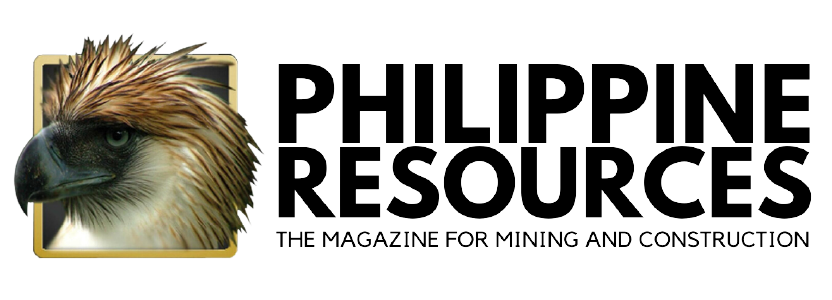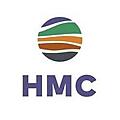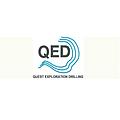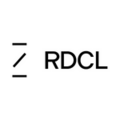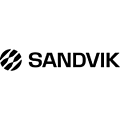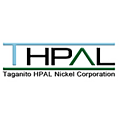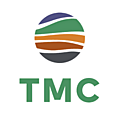Latest News
Trending News
The 2025 Extractives Transparency Week (ETW) opened with renewed momentum toward more inclusive and accountable natural resource governance in the Philippines, as the Philippine Extractive Industries Transparency Initiative (PH-EITI) marked its second decade of promoting transparency, accountability and public participation in the mining, oil and gas sectors.
With the theme “Extracting Better Futures: Amplifying Stakeholder Voices Towards Inclusive Development,” this year’s ETW is highlighting the need to ensure that transparency efforts translate into equitable and sustainable outcomes. Stakeholders from across the country gathered in Manila to examine emerging challenges and opportunities in extractive governance, with a strong emphasis on collaboration and elevating community perspectives.
Day 1, held Nov. 25, featured the Industry Constituency’s parallel session, “Strengthening Accountability and Community Relations in a Changing Extractives Landscape,” at the Department of Finance. Representatives from the mining, oil and gas industries convened to discuss how global expectations and domestic realities are reshaping the responsibilities of industry players.
The session opened with a presentation from Katrina Francisco, partner at SGV & Co., who described today’s operating environment as “NAVI” — nonlinear, accelerated, volatile and interconnected. She outlined three major shifts affecting the sector: rising demand for reliable ESG information; the integration of climate, nature and just transition considerations into corporate strategy; and the rapid expansion of digital technologies for monitoring and transparency. Companies that can “integrate credible data, climate and nature action, and genuine community participation” will be best positioned to maintain their social license to operate, she said.
A panel discussion followed with Diory Carr of the Mines and Geosciences Bureau, Marjorie Idio of OceanaGold Philippines Inc., and Guillermo Ansay of the Department of Energy. The panelists underscored the need to harmonize ESG and community-relations frameworks across industries, strengthen capacity-building for companies and host communities, and ensure consistency between national and local regulations. Their insights pointed to the importance of institutional alignment and people-centered approaches to responsible extractives.
Breakout discussions allowed industry participants to examine practical challenges in sustaining trust and acceptance in host communities. Participants cited persistent misinformation, uneven access to technical information, and longstanding local grievances as barriers to maintaining a social license to operate. They also emphasized that transparency is meaningful only when information is accessible, timely and communicated in ways that communities can understand.
Across sessions, communication emerged as a recurring theme. Speakers and participants noted that credible and consistent information is essential for building trust, and that communication platforms must be used strategically to reach those who need the information most. Transparency, they stressed, requires more than compliance — it requires ensuring that communities feel informed, included and confident in their engagement with the sector.
As the session closed, participants emphasized that accountability and community relations are now central to determining the legitimacy and long-term viability of extractive operations. Discussions throughout the day pointed to the need for harmonized standards, stronger open-data systems, empowered communities, aligned policies and greater innovation. These efforts, many agreed, are necessary to create an extractive sector that supports inclusive development, advances the country’s clean-energy transition and upholds responsible stewardship of natural resources.
This year’s ETW was held alongside FORGE Philippines 2025: PH-EITI National Conference, bringing together government agencies, industry leaders, civil society organizations, Indigenous communities, partner institutions and representatives from the international EITI community.
Over four days, participants discussed a wide range of issues: beneficial ownership transparency and corporate accountability; industry priorities amid accelerating ESG standards; localizing transparency and empowering communities and local governments; national wealth sharing and fiscal coordination; Indigenous rights, FPIC, SDMPs and environmental disclosure; the energy and just transitions; the Philippines’ emerging role in critical mineral supply chains; and labor protections in the extractive sector.
Organizers described ETW as more than a conference — a convergence of stories, expertise, challenges and hopes. As one summary statement noted, “ETW is never just an event; it’s a convergence of stories, expertise, challenges, and hopes for a better extractives landscape.”
In closing, PH-EITI expressed gratitude to partners, speakers, panelists, members of the Multi-Stakeholder Group and participants for their contributions. The week’s events, it said, reflected a shared commitment to “forging stronger governance, deeper transparency, and more inclusive development for the communities who stand at the center of our natural resource story.”
Japan’s support to the Philippines will accelerate the completion of infrastructure projects that will bring immediate benefits to the Filipino people, Public Works Secretary Vince Dizon said.
President Ferdinand Marcos Jr. has directed the Department of Public Works and Highways (DPWH) to expand cooperation and partnerships with other countries to bolster the Philippines’ infrastructure development.
Secretary Dizon expressed his gratitude to the Government of Japan, through the Ministry of Land, Infrastructure, Transport and Tourism (MLIT), for assisting the Philippines in modernizing the country’s infrastructure network, which, in turn, will support mobility, connectivity, and economic development.
“President Ferdinand Marcos Jr. is confident that the cooperation between the Philippines and Japan will lead to the country’s economic growth, improved trade, and increased investments. The DPWH will ensure that the Filipino people reap the benefits of this assistance for an improved quality of life,” Secretary Dizon said during the 4th Technical and Business Cooperation on Road Tunnel Construction workshop.
The workshop was led by key representatives from both countries, including MLIT Assistant Vice Minister for Engineering and Road Tomiyama Hidenori; Embassy of Japan Economic Minister Yokota Naobumi; JICA Philippines Senior Representative Morishima Takanori; and DPWH Senior Undersecretary Emil K. Sadain and Undersecretary Nicasio A. Conti.
Discussions focused on strengthening technical cooperation and business relations between the Philippines and Japan. Experts and companies from the road and tunnel infrastructure sectors shared knowledge, exchanged best practices, and explored opportunities for future project collaboration.
The partnership will promote technology transfer, technical collaboration, and business matchmaking for Japan-funded infrastructure projects, as well as the ongoing Davao City Bypass Construction Project and the planned Dalton Bypass East Alternative Road projects.
An interview with Austrade Commissioner Luisa Rust
“Trade and investment ties between Australia and the Philippines are robust and steadily growing, underpinned by strong bilateral agreements and shared strategic interests. Two-way trade is at $10.7 billion in 2024, with the Philippines being Australia’s 20th largest two-way goods and services trading partner. There are over 250 Australian companies operating in the Philippines employing more than 40 thousand Filipinos.”
(Austrade Commissioner Luisa Rust)
Minerals, Data, and a New Kind of Resource Wealth
By Fernando Penarroyo
The Philippines has long been recognized as one of the world’s most mineral-rich countries. With deposits of nickel, copper, and gold, it plays a vital role in global supply chains, especially at a time when electric cars, batteries, and renewable energy systems are driving demand for these resources.
Even though mining can create jobs, bring in much-needed revenue, and connect the Philippines to international markets, there is still the lingering perception that it can harm the environment and displace communities.
Now, another kind of resource is taking center stage alongside minerals—data. Mining in the twenty-first century is not only about extracting ores from the earth; it is also about gathering information.
While mining companies use drones to map terrain, satellites to track environmental changes, and sensors to monitor everything from air quality to worker safety, they also collect information from host communities and indigenous peoples.
Through surveys on health, demographics, and community sentiment, mining companies are no longer just extracting resources from the ground, they also “extracting” information from people and the environment.
Handled poorly, this new form of extraction can create serious risks for privacy, fairness, and sovereignty. But handled well, it can be turned into an opportunity to strengthen communities, improve governance, and protect national interests.
The Philippines has the chance to set an example by treating both minerals and data as shared resources that must be managed responsibly for the benefit of Filipinos.
Digital Mining: How Data Transforms Operations
Mining today is highly digitized. Advanced technologies have transformed operations, making it possible for companies to work more efficiently and safely. Drones are used to create detailed maps of landscapes, satellites help track changes in forests and water bodies, and sensors provide constant updates on machinery and safety conditions. These tools generate huge amounts of data that can be used to comply with environmental rules, improve productivity, and reduce accidents.
Beyond technology, mining firms also collect information directly from communities. Environmental and social impact assessments often involve surveys about health and livelihoods, while corporate social responsibility programs may gather data on education and living standards. In some cases, companies or their contractors even monitor social media to see how people feel about mining projects.
When collected and shared responsibly, this kind of information can be valuable. It can help companies respond more quickly to community concerns, give government agencies evidence to enforce rules, and provide communities with the data they need to push for better services.
For example, if surveys show an increase in health issues near a mining site, this could become the basis for improved health care in the area. If water quality tests reveal pollution, communities could use this data to demand cleaner practices or compensation. In this way, data has the potential to balance power between corporations, the state, and its citizens.
The Risks of Data Extraction
However, risks arise when data collection is done without fairness or transparency. One of the biggest concerns is that communities may not give informed consent for how their data is used.
Under the Indigenous Peoples’ Rights Act, indigenous groups must give their free, prior, and informed consent (FPIC) before mineral exploration and mining operations begin on their land.
Yet FPIC usually does not extend to data collection. This means a community might allow a project to operate but not realize their personal information and opinions, or household details are being stored and possibly shared with third parties.
Another issue is information imbalance. Often, companies collect data and share it with investors or government agencies but not with the very people from whom the information was generated and most affected by the operations.
A mining company may test river water quality and submit a report to regulators saying conditions are safe, but families who depend on that water for farming or drinking may never see the full results. This creates an unfair situation where those who face the risks have the least access to the knowledge that could help them.
There is also the potential for misuse. In areas where opposition to mining is strong, information about community leaders or activists could be used to monitor them. Even if this is not the intention, the risk remains that data collected for one purpose could later be applied in ways that put individuals at risk.
Data as Resource Wealth
Despite these challenges, data can be seen as an opportunity if it is treated as a resource in its own right. Just as minerals are considered part of national patrimony, there is a strong case for viewing mining-related data as a national asset.
Companies see it as part of their business operations, but governments recognize its value for planning, monitoring, and security, while communities see it as essential for protecting their health and livelihoods. Balancing these interests is key.
This debate mirrors the general struggle over mineral sovereignty. For decades, Filipinos have insisted that the benefits of mining flow to the nation before being repatriated abroad. The same logic can apply to information.
The Philippines supplies large amounts of nickel and copper, which are critical for the global shift to clean energy. Investors often require access to operational data before they commit funds. If the Philippines asserts sovereignty over this information, it can make sure it is shared under terms that benefit the country, not just outside players.
Mining Data, Geopolitics and National Security
The strategic value of mining-related data goes beyond economics. Geological surveys, environmental records, and infrastructure maps have national security implications. If such information is stored abroad or left in foreign hands, the Philippines could lose control over knowledge about its own resources.
This is especially important in a world where powerful nations like the United States and China are competing for control of supply chains for clean energy. In this context, protecting mining data is not only about fairness for host communities but also about protecting sovereignty at the national level.
Handled wisely, mining data can enhance the Philippines’ negotiating position. A country that demonstrates strong data governance signals to investors and partners that it values not only economic efficiency but also sovereignty and rights. This can attract responsible investment, increase trust, and prevent exploitative practices.
Toward Dual Stewardship of Resources and Data
Critics of mining often use the term “extractivism” to describe the large-scale removal of resources that benefits outsiders more than locals. Increasingly, some fear that the same thing is happening with information. Data is being “extracted” from people without giving them anything in return.
Yet the Philippines has an opportunity to change this narrative. Instead of allowing extractivism to dominate, the country can practice shared stewardship. This means treating minerals and data not as things to be taken but as resources to be managed responsibly, with benefits fairly distributed.
Imagine if every community near a mine automatically received the results of environmental and health studies in plain, easy-to-understand language.
Imagine if mining companies used the data they collect not just to meet legal requirements but also to invest in cleaner water, stronger health systems, and better local infrastructure.
Imagine if the government stored mining data locally and used it to guide national plans for disaster preparedness and climate resilience.
This is the vision of stewardship: turning data into a tool for empowerment.
The Role of the Data Privacy Act of 2012
The Data Privacy Act of 2012 (Republic Act No. 10173) provides a foundation for this. The law protects individual personal information in both government and private sectors by regulating the collection, processing, and storage of personal data.
It created the National Privacy Commission to implement regulations, protect data subjects' rights, and ensure the country's data protection measures are in line with international standards.
The law emphasizes transparency, legitimate purpose, and proportionality, meaning that data must be collected openly, only for clear reasons, and in amounts that are necessary. For mining companies, this means employee records, health surveys, and community data must all be handled responsibly.
In practice, enforcement is still uneven. Many communities are not fully aware of their rights under the law, and the National Privacy Commission has limited resources to enforce such rights.
Environmental regulators rarely coordinate with privacy regulators, leaving gaps in oversight. But these challenges can be addressed. With stronger cooperation, more training, and better resources, the Data Privacy Act can become a powerful tool for protecting and empowering both people and the nation.
Artificial Intelligence and Data Privacy Issues
Artificial intelligence (AI) is now integral to modern mining operations, optimizing exploration, production, logistics, and sustainability. However, this integration brings complex data-privacy challenges.
AI systems in mining collect vast amounts of information ranging from worker biometrics to operational performance data, which may contain personally identifiable or sensitive industrial details.
These systems often aggregate and analyze data across departments, leading to privacy risks such as surveillance concerns, unintentional re-identification, and exposure through third-party vendors or cross-border data transfers.
The growing use of AI also introduces risks tied to the difficulty of explaining or contesting automated decisions affecting individuals.
As AI systems become more involved in making or supporting decisions, it becomes harder for people and sometimes even for the companies using them to understand how or why those decisions were made. The Data Privacy Act demand stronger governance, emphasizing employee consent, data minimization, and transparency.
Meanwhile, regulatory trends such as data localization are reshaping how global mining firms handle information.
Data localization prohibits or restricts the transfer of certain types of data (especially personal, environmental, or strategic industrial data) to servers or cloud platforms located outside the country. The goal is to protect national sovereignty, privacy, and security by keeping sensitive data under Philippine jurisdiction.
Beyond compliance, these measures have strategic implications. As AI turns data into a valuable asset, privacy management becomes central to maintaining corporate reputation and social license to operate. Breaches or unethical use of data could harm community trust and investor confidence.
Ultimately, while AI enhances efficiency and sustainability, it also demands rigorous, transparent, and ethical data governance to ensure that innovation aligns with human rights and privacy standards.
Policy Pathways: From Protection to Empowerment
Several steps can help move toward this vision. Extending social license and community consent to cover digital data would give communities control over how their information is collected and used. Guaranteeing that communities have access to health and environmental data would ensure transparency.
Requiring that sensitive mining information be stored properly would protect sovereignty. Including data practices in environmental impact assessments would mandate companies to explain not only how they treat land and water but also how they handle digital information.
Strengthening the capacity of regulators and encouraging public-private partnerships could further build systems where digital data is shared responsibly. Each of these pathways transforms digital information from a potential liability into a tool for empowerment and development.
Conclusion
Mining in the Philippines has never been just about minerals. It has always been about who benefits, who bears the costs, and who gets to decide.
In the digital age, this struggle now extends to data. Communities that once fought for land rights must now also claim their informational rights, while the state must balance local needs with global pressures. This is not only a challenge but also an opportunity.
By protecting both natural and digital resources, the Philippines can move beyond extractivism and build a model of stewardship that is inclusive, sustainable, and sovereign.
If mining is left unchecked, it could continue to drain both natural wealth and informational resources without fairly benefiting the country. But if managed wisely, the Philippines can turn mining into a force for justice and sustainability.
Protecting both land and information ensures that communities are empowered, companies are accountable, and the nation secures its place in a competitive world. Mining responsibly and governing data fairly are not separate goals. They are part of the same fight for dignity, sovereignty, and the future of the Filipino people.
Fernando “Ronnie” S. Penarroyo specializes in Energy and Resources Law, Project Finance and Business Development. He is also currently the Chair of the Professional Regulatory Board of Geology, the government agency mandated under law to regulate and develop the geology profession. For any matters or inquiries in relation to the Philippine resources industry and suggested topics for commentaries, contact him at fspenarroyo@penpalaw.com. Atty. Penarroyo’s commentaries are also archived at his professional blogsite www.penarroyo.com
Polymeric Shimming and Chocking Systems Protect Assets Against Corrosion
Pourable shimming and chocking systems are used worldwide in marine, offshore, and many other industrial environments. They provide reliable alignment, reduced vibration, and long-term corrosion protection.
Avoid Asset Failures with Effective Precision Alignment
Within heavy-duty industries, precision alignment is essential for ensuring safe and efficient operation. Shimming provides fine adjustments to correct uneven interfaces and achieve precise alignment, while chocking fills larger gaps and creates a continuous, load-bearing contact surface capable of supporting engines, propulsion systems, compressors, generators, gearboxes, and other critical assets. When executed correctly, these processes help prevent costly failures caused by mechanical stress, misalignment, and vibration.
Drawbacks of Conventional Solutions
Conventional solutions such as steel plates, metal wedges, or cementitious grouts have notable limitations. Metallic bearing shims and load-bearing shims are vulnerable to corrosion and distortion, while cement-based products can shrink, crack, or degrade under repeated thermal or dynamic loads. Over time, these weaknesses can compromise structural integrity, cause vibration issues, or accelerate wear.
Benefits of Polymeric Technology
Polymeric alternatives have proven to be highly effective in overcoming these challenges. Designed for resilience in demanding industrial environments, they offer excellent dimensional stability, high compressive strength, and long-term protection against corrosion.
Shimming System for Demanding Conditions
The shimming material Belzona 7111 is widely used across the marine and industrial sectors. This 100% solids, two-component system is formulated for high-load, precision chocking applications. Its self-levelling, pourable properties allow it to flow easily into complex geometries, ensuring uniform contact between equipment and its foundation.
Once cured, Belzona 7111 forms a solid, monolithic block that resists deformation under static and dynamic loads. Because it is non-metallic and corrosion-resistant, it avoids the long-term deterioration seen with metal-based shims and wedges. This stability helps maintain proper alignment, reduce vibration, and protect mounting hardware throughout the equipment’s operational life.
Belzona 7111 is approved by:
American Bureau of Shipping (ABS)
Bureau Veritas (BV)
Det Norske Veritas (DNV)
Lloyd’s Register (LR)
Deep-Pour Capabilities for Complex Shimming Scenarios
For installations requiring large-volume pours or deep fills, Belzona 7211 can be used to create strong, void-free chocks in demanding applications. This system is frequently selected when traditional load-bearing shims or high-impact load-bearing shims cannot provide the continuous support needed for heavy-duty equipment.
With its self-levelling characteristics and excellent performance on uneven or irregular foundations, Belzona 7211 ensures consistent load distribution—reducing the risk of mechanical fatigue, vibration-related failures, and alignment drift.
Long-Term Corrosion Protection and Dimensional Stability
A key advantage of polymeric shimming and chocking solutions is their ability to prevent corrosion at the equipment interface. Metal-based bearing shims and cementitious grouts can trap moisture, leading to crevice corrosion or cracking. Polymeric materials eliminate these vulnerabilities by being non-porous and maintaining dimensional stability in aggressive environments, including marine atmospheres, offshore platforms, and high-moisture industrial settings.
By maintaining stable geometry and resisting corrosion, polymeric systems—such as Belzona 7111 and Belzona 7211—help extend equipment life, reduce maintenance frequency, and prevent costly unplanned downtime.
About Belzona:
Established in 1952, Belzona has pioneered innovative polymer technology that has revolutionised industrial repair and maintenance procedures.
Belzona is a leading company in the design and manufacture of polymer repair composites and industrial protective coatings for the repair, protection, and improvement of machinery, equipment, buildings, and structures.
At Harrogate, the full Belzona product range is manufactured to stringent quality and environmental control guidelines, complying with the requirements of ISO 9001:2015 and ISO 14001:2015.
Belzona has over 159 distributors in more than 120 countries, ensuring not only the availability of Belzona materials but also specification support, project management, application, and supervision services. Distributorships and their teams are supported by Belzona Corporate offices in Europe, North America, and Asia.
For more information, please visit: www.Belzona.com
Geo Connect Asia
Geo Connect Asia 2026, themed “Geospatial driven impacts: underground, land & sea to sky”, focuses on bringing the geospatial and location intelligence industries together for two days of face-to-face discussions and networking on the 31st March & 1st April in Sands Expo & Convention Centre, Singapore.
Supported by the Singapore Land Authority, the event and conference stages enables government agencies, enterprise and non-profit to learn from each other and network with industry professionals and solutions providers from the Asian region and beyond.
Meet in-person and network with some 3,000 industry professionals, all sharing a collective vision of the global geospatial community. The 2026 event will specifically focus on solutions for the ASEAN mining industry, with a series of RoundTables addressing key issues.
Visit the event website: https://www.GeoConnectAsia.com
Digital Construction Asia
Digital Construction Asia 2026 focuses on accelerating change in the construction industry across the Southeast Asian region with the theme “Delivering intelligent solutions for the built environment”. The event will be held alongside Geo Connect Asia on 31st March & 1st April at Sands Expo & Convention Centre, Singapore.
Supported by the Singapore Land Authority, Digital Construction Asia brings together government agencies, the private sector and the many intermediaries responsible for delivering projects on time and with optimal efficiency.
The conference programme will include Digital Underground Connect, exploring technologies for managing and monitoring underground assets.
Visit the event website: https://www.digitalconstructionasia.com/
Drones & Uncrewed Asia
Drones & Uncrewed Asia 2026, co-located with Geo Connect Asia, will take place on 31st March & 1st April at the Sands Expo & Convention Centre, Singapore.
With the theme “Delivering autonomous solutions & innovation in Asia’s UAV industry” the event and conference addresses leading industry topics including regulatory challenges, surveillance, cargo delivery, emergency services, maintenance and the management of critical infrastructure.
The accompanying technical talk sessions provides a unique opportunity to explore the latest in drone technology through end-user case studies on AI and robotics, data interoperability, autonomous solutions, Urban Air Mobility (UAM), and regulatory updates.
Visit the event website: https://www.geoconnectasia.com/drones-uncrewed-asia
